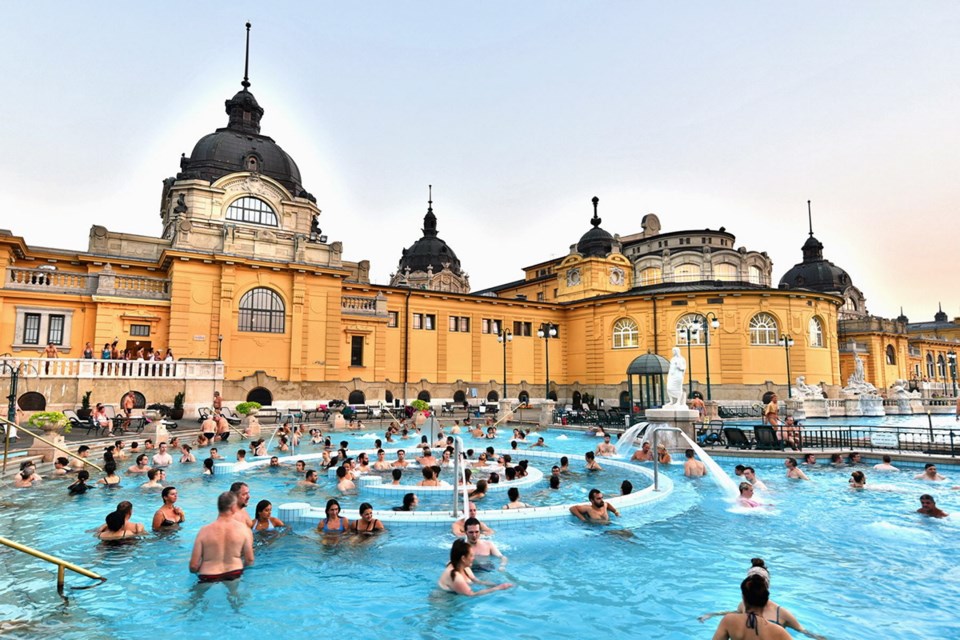Strung along the Danube River, three captivating cities — Vienna, Bratislava and Budapest — make up a triangle of enjoyable urbanity at the heart of central Europe. These capitals share a common Habsburg history, and thanks to their proximity — only one or two hours apart by train — combining all three into one trip is a breeze.
Vienna ranks at the top of my list of elegant European cities. Once the capital of the mighty Habsburg empire, it has a rich culture you can almost inhale — and an easy livability that I admire.
From a sightseeing point of view, Vienna is the sum of its illustrious past, with a dizzying number of sights and museums to explore. But the overall vibe of the city itself is just as enjoyable. Having lost the First World War and her political power, Vienna has kicked back, becoming an expert in good living.
Vienna has a long history as Europe’s music capital, and classical music performances are everywhere, from public parks to the Vienna State Opera — which belts out 350 glittering shows a year. Gilded high culture can be surprisingly affordable here — an opera standing-room ticket is about the same price as a cinema ticket.
Whether you’re enjoying Strauss in a park or lingering in a genteel café, Vienna is a class act. For a literal taste of old Vienna, step into one of its cafés to relax with a cup of coffee, a thick slice of cake and a newspaper. With crystal chandeliers and worn red-velvet chairs, these establishments have the charm of times past.
Less than an hour’s train or boat ride away from Vienna, Bratislava, the Slovak capital, is a convenient “on the way” destination between Budapest and Vienna. Its compact old town is lined with venerable cafés, Renaissance arcades, and fun-to-browse boutiques.
A few hours are plenty to get the gist of the city. Though lacking blockbuster sights, Bratislava is an unexpected charmer and perfect for strolling. Head straight to the old town and wander its mostly traffic-free streets. The petite main square features a historic fountain, built to celebrate the 1563 coronation of Maximillian II — the first Habsburg emperor to also be crowned “King of Hungary.” Back then, Slovakia was part of Hungary, which was ruled from Austria. (Got that?)
Finish your stroll with a hike to Bratislava Castle, the city’s most prominent landmark. Originally a military fortress, in the 18th century it was turned into a royal residence for Habsburg Empress Maria Theresa. While the castle houses exhibits, the main reason to head up the hill is for the views over the city and the Danube.
Bratislava’s energy is inspiring, but the true powerhouse is Hungary’s capital, Budapest. It can be challenging and complicated, but Budapest is worth it: It’s an enjoyably cosmopolitan place of unexpected elegance.
Straddling the Danube River, it’s technically two towns in one, with mighty bridges linking historic Buda and modern Pest. Hilly Buda is dominated by Castle Hill. The royal palace marks the place where one of Europe’s mightiest castles once stood. Since the 14th century, Hungary has been ruled from this spot.
Because of its heritage, Budapest feels more grandiose than you’d expect for the capital of a small country. The city boomed in the late 19th century, after the Habsburg rulers made it co-capital — with Vienna — of their vast Austro-Hungarian empire. That boom peaked with a flurry of construction in anticipation of a citywide party in 1896, the thousandth anniversary of the arrival of the Magyars (Hungary’s original ethnic group).
Budapest’s long-standing rivalry with Vienna spurred its planners to build bigger and better. Many of the city’s finest landmarks date from this era, including the neo-Gothic Hungarian Parliament, the opulent State Opera House and the voluminous Central Market Hall.
Budapest’s residents, like their Viennese neighbours, have retained a keen knack for living well. Spend an hour or two (or the whole day) splashing and soaking in one of the city’s many thermal baths. Though public baths can sound intimidating, they’re a delight — and are my personal favourite among all of Budapest’s inviting experiences.
The city’s café culture has made a strong comeback (the communists had closed down the cafés as a dissident breeding ground). The old coffee shops are being restored, rivaling those in Vienna and dripping with Habsburgian nostalgia. Whiling away the afternoon at a coffeehouse while nursing a drink or savouring a delicate dessert is a favourite pastime.
For panoramic views from the remaining castle ramparts, ride the funicular up to Castle Hill. Or cap a day of sightseeing with an evening cruise on the Danube — the chain that links the three capitals of Vienna, Bratislava, and Budapest.
Rick Steves (ricksteves.com) writes European travel guidebooks and hosts travel shows on public television and public radio. Email him at [email protected] and follow his blog on Facebook.


